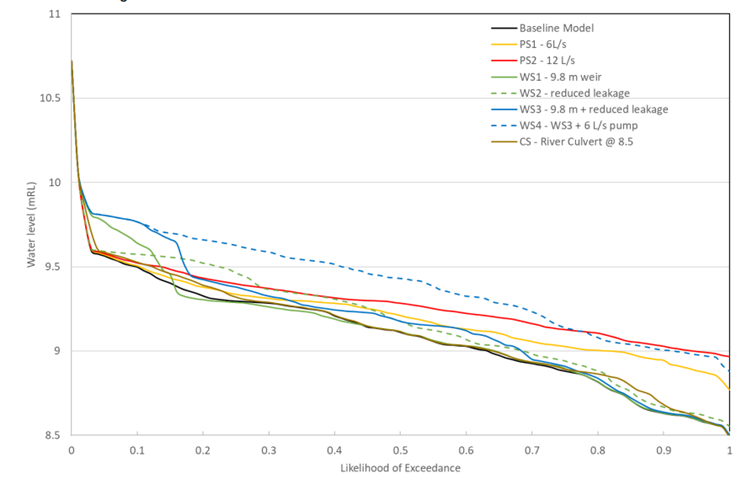Enhancing Wetland Habitat using a Water Balance Model

Collaborations developed a GoldSim wetland water balance model for Fish and Game New Zealand, an organization that manages, maintains and enhances sports fish and game birds and their habitats in New Zealand. The 35 ha Howarth Memorial Wetland is a wildlife refuge located in the Waikato Region in the North Island (image courtesy of Google Earth with data from Matamata-Piako District Council).
The riverine wetland sits alongside the Waihou River, and provides significant habitat for a range of threatened and common bird and fish species. From 2019 to 2022, this region was subject to three years of successive low rainfall and summer droughts, which unfortunately resulted in the wetland drying out and a loss of standing water and aquatic habitat. The consequences of this climatic period led to both mortalities of fish and birds, and the successive drop in recruitment over multiple years.
Fish and Game wanted to understand if there were ways to mitigate the significant habitat decline during these dry periods. A water level logger was installed, and a surveyor was able to collect stage/storage data during low water levels. The GoldSim model utilized historic climate data from nearby met stations, river flow and stage records and a range of as-built data on weirs and culverts (connecting the river to the wetland). The model had to account for rainfall/runoff in surrounding catchments, seepage losses, water level control from two weirs and drainage through culverts, and river recharge at certain stages.
Once the baseline model was suitably calibrated to daily mean water levels and validated with anecdotal records/observations over the dry period, a number of mitigation scenarios were tested. This included pumping from the river, raising weir heights, reducing leakiness of weir boards, installation of new culverts with flap gates and various combinations of these measures. The model scenarios focused on the 4-year period that encompassed the droughts, to assess how water levels could have been improved. The ability to quickly and cost effectively test a range of scenarios in GoldSim was extremely useful to guide management decisions.

Probability of exceedance of water levels from 4 years of simulations (1 January 2019 to 31 December 2022) for various scenarios.
